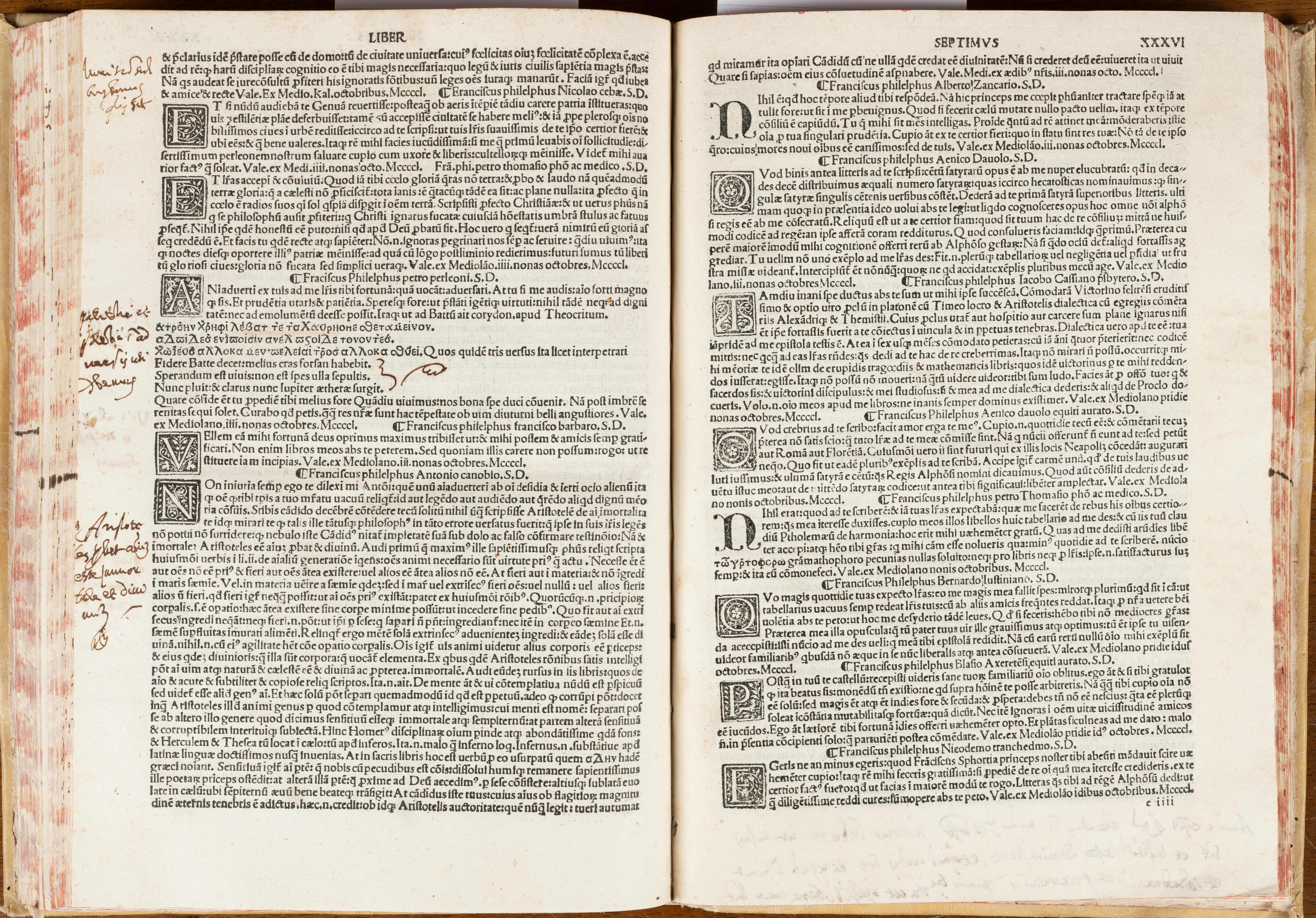Epistolae of Franciscus Philelphus
Franciscus Philelphus (Tolentino 1398 - Florence 1481)
Philelphus, born in 1398 in Tolentino, completed his early studies in Padua and at the age of 18 was appointed a professor. Between 1417 and 1419, he also taught in Venice and his scholarly knowledge of Greek led to his travel to Constantinople where he received prestigious appointments from Emperor Johannes Palaeologus. There he perfected his Greek at the school of Johannes Chrysolora, whose daughter he married. Back in Italy, he taught in Florence, Siena, Bologna, Pavia and Milan at the service of the Visconti and then the Sforza families. In Rome he was protected by Sixtus IV. Late in life he was called back to Florence by Lorenzo the Magnificent. Philelphus was a skilful flatterer, able to pass from court to court winning favours with his eulogistic writings.
Amongst the humanist's enormous productions, his rich Epistolary is particularly important, approximately more than two thousand letters in Latin that Philelphus began collecting in 1451 until his death. The Epistolae, lively letters addressed to the leading humanists and lords of Italy, were circulated in manuscript copies (including the famous manuscript 873 in the Trivulziana Library in Milan) and were printed several times in the late 15th century. The first edition, dated 1485, was printed in Brescia, while the most complete edition is the Venetian edition of 1502. The Epistolae contain a treasure trove of literary and political information that wonderfully exemplifies the 15th century.
The volume preserved in the Uffizi Library is an early manuscript that was reproduced in Venice, in 1498, by the publisher Giovanni Tacuino; clearly recognisable in the colophon is the letterpress mark with the double circle surmounted by two crosses. The copy, which was kept in the Capuchin Library in Montughi (see Index librorum omnium Bibliothecae Florentinae Capuccinorum Montiis Ughorum tre partis distinctus.Cum appendice. 1795), came to the Royal Galleries in 1810 following the Napoleonic suppressions.
P. Viti, «Filelfo, Francesco», in Dizionario Biografico degli Italiani , Volume 47, Roma, Istituto dell'Enciclopedia Italiana, 1997; F Filelfo, Opere storiche e politiche. Volume I. Filelfo e la storia. A cura di Gabriella Albanese e Paolo Pontari, Firenze, SISMEL Edizioni del Galluzzo, 2018; F. Filelfo, Corrispondenza. I. Lettere volgari. Edizione critica e commento a cura di Nicoletta Marcelli, Firenze, SISMEL Edizioni del Galluzzo, 2019. ;Manoscritto 211 , 1810, Firenze, Biblioteca degli Uffizi
